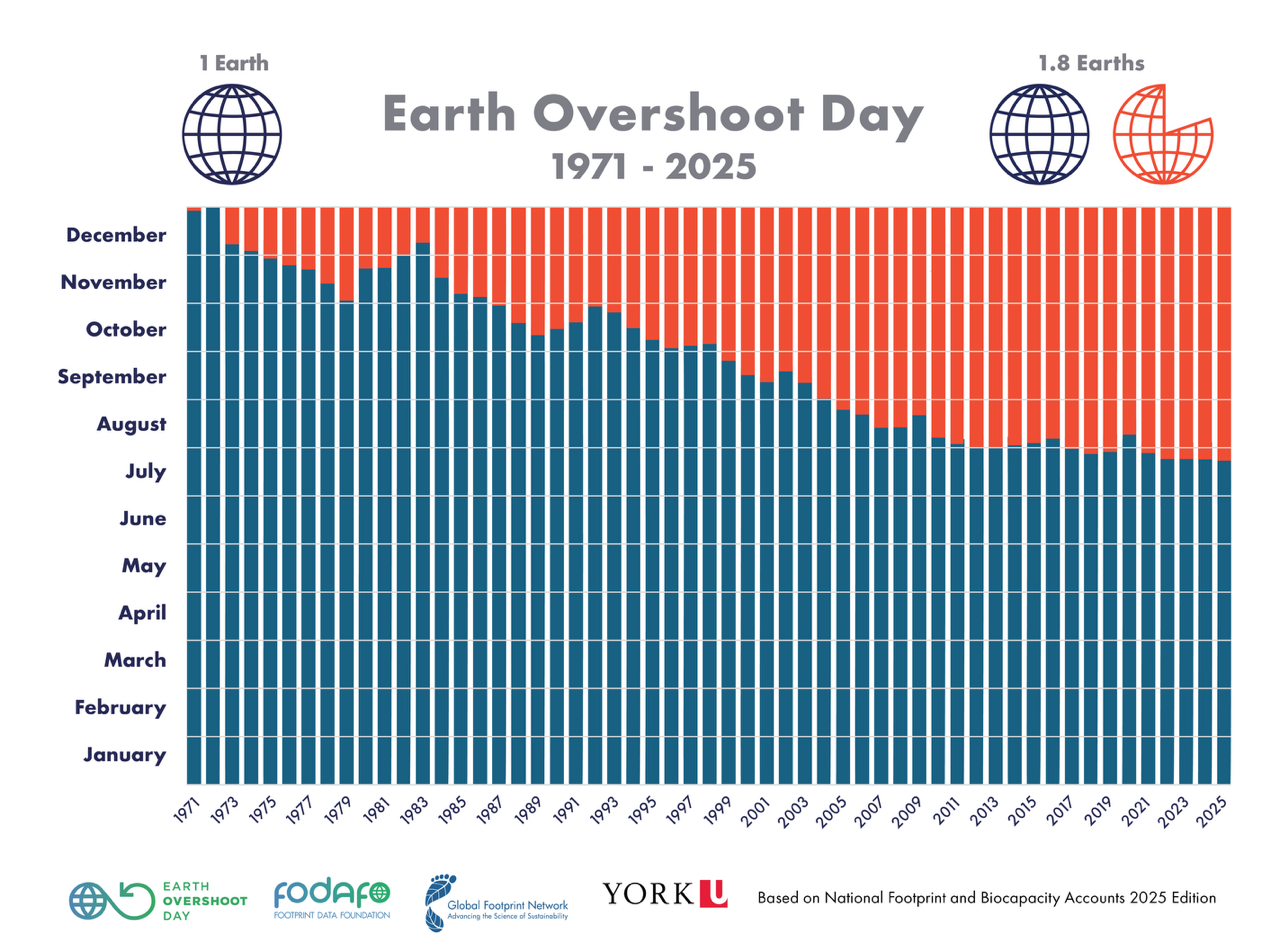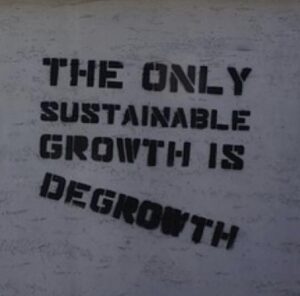
Image: Global Footprint Network, www.footprintnetwork.org The top of the blue columns indicates the day overshoot started. The red indicates the duration of overshoot.
I was driving up Main Avenue, listening to a book and glancing to the left to find the eye doctor where I had an appointment. I looked at the clock and realized that I was almost late—then I realized that I had overshot my destination and made a “U” turn.
Not all types of overshoot are so easily corrected with a “U” turn. We are in ecological overshoot, which is much more complex than driving past that office. Ecological overshoot occurs when the demands made on a natural ecosystem exceed its regenerative capacity. Globally, we have exceeded our planet’s ability to regenerate what we take by about 80%. To put it simply, we are using more of the planet’s resources than are available.
Ecological overshoot is a little like overspending your credit card. You can get away with overspending for a while, and many people do. The average per capita debt in the USA is over $100,000, and more than $6,000 of that debt is owed to credit cards. You can be assured that the card company or the bank will eventually get their money, however. Unfortunately, it is our progeny who will need to pay for our ecological overshoot. We have overpopulated the planet, and are consuming too much “stuff”.
How can global overshoot be measured? You must know the resources of the planet, and how much of those resources we, humanity, are using. The Global Footprint Network, www.footprintnetwork.org, does those complicated measurements on a routine basis. It is relatively easy for them to calculate our excess use of resources. They have an interesting way of expressing overshoot.
One might think of measuring overshoot as megatons of carbon emissions or perhaps global debt; however, both of these concepts are difficult to understand intuitively. Instead, they use information from every country to determine nature’s “budget”, what our planet can supply. Then they estimate the day when we have used up all of that budget. Back in the early 1970s, we fit in the global budget. There were enough resources to supply all human needs, although they were distributed very inequitably. Since then, however, we have increasingly overspent that budget. Global population has more than doubled, and consumption has quadrupled, plus. We are too many people, consuming too much.
This year Earth Overshoot Day came the earliest ever—on July 24th. That marks the date when humanity has exhausted nature’s budget for the year. It was August 1st last year, and next year will probably be earlier in July. We are overshooting nature’s budget as fast as we’re racking up our national debt!
There are ways to decrease, and perhaps eventually reverse, overshoot. I’m sure you are aware of some; but let’s look at what the experts are saying. The Footprint Network people took advantage of the work done by Project Drawdown and came up with a list of solutions for overshoot. You can learn more at: www.overshootday.org/pop. If we took full advantage of all 76 items on the list, we could move Overshoot Day more than a month later. Two of the most effective solutions, “Educating Girls” and “Family Planning”, are similar in the way they have their effect—by reducing population growth. They are combined at the linked website.
Voluntary family planning is probably the most effective, least expensive and most humane way to slow population growth. Although World Contraception Day was on September 26th, let’s keep this year’s theme in mind: “Breaking Barriers, Building Bridges—Contraceptive Access for All”!
© Richard Grossman MD, 2025
